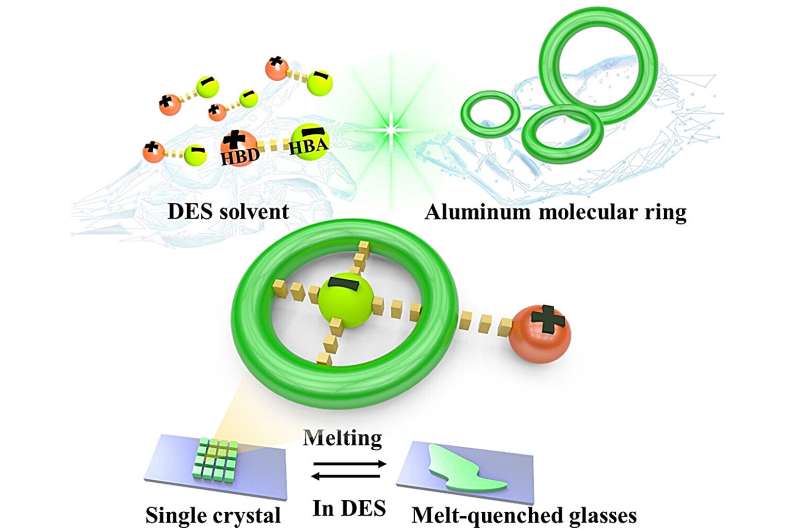by Liu Jia, Chinese Academy of Sciences

Glass can be synthesized through a novel “crystal-liquid-glass” phase transformation. Crystalline materials can be fine-tuned for desired properties such as improved mass transfer and optical properties through coordination chemistry and grid chemistry design principles.
However, how to induce the local structural disorder of crystalline materials to achieve glass transition remains a challenge because most of them undergo decomposition before melting.
In the metal-organic framework system, the exploration of glassy states is limited to a few model compounds such as ZIF-4, ZIF-62 and ZIF-8. There is a need to break the limitation of metals and ligands in the “crystal-liquid-glass” process and to develop the glass synthesis pathway of universal crystalline materials.
In a study published in Angewandte Chemie International Edition, a research group led by Prof. Zhang Jian and Prof. Fang Weihui from Fujian Institute of Research on the Structure of Matter of the Chinese Academy of Sciences reported the meltable aluminum molecular rings with fluorescence and nonlinear optical properties.
Inspired by the characteristics of deep eutectic solvent (DES) mixtures involving significant depressions in melting points compared to their neat constituent components, the researchers designed and synthesized the first examples of meltable aluminum oxo clusters via lattice doping with DESs at the molecular level.
This kind of molecular ring compound undergoes a crystal-liquid-glass process after heating. The abundant and strong hydrogen bonds between the aluminum molecular ring, DES components and the lattice solvent in the structure are considered to be the root cause of the lower melting point. This lattice doping bonding method provides a general preparation method for the development of cluster glass.
The researchers determined the composition changes of the compounds before and after melting and quenching by modern characterization methods and in situ temperature monitoring (TG-IR-MS). They tried to mix DES solvent with an empty Al8 ring by physical doping, and found no melting phenomenon in the mixture after heating, which proves the importance of doping the DES component in the lattice, that is, DES component forms a “supracluster” structure with aluminum molecular ring.
Owing to the plasticity of the cluster glass “soft material,” the researchers explored its machinability and optical properties. They prepared the bubble-free glass film by a simple “hot pressing” method under atmospheric pressure, and well maintained the luminescence and third-order nonlinear effect similar to that of the original crystal.
The forming of this cluster glass film does not require additional mixed media, which is different from the traditional substrate bonding method, revealing the advantages of cluster glass.
This study demonstrates the potential of aluminum-related glass prepared by the third most abundant metal in the Earth’s crust, for sustainable development. The strategy combining the aluminum molecular ring and ionic liquid component overcomes the limitation of metal and ligand type of crystal glass, and provides a better approach for the study of “crystal-liquid-glass.”
More information: San-Tai Wang et al, Meltable Aluminum Molecular Rings with Fluorescence and Nonlinear Optical Properties, Angewandte Chemie International Edition (2024). DOI: 10.1002/anie.202400161
Provided by Chinese Academy of Sciences

